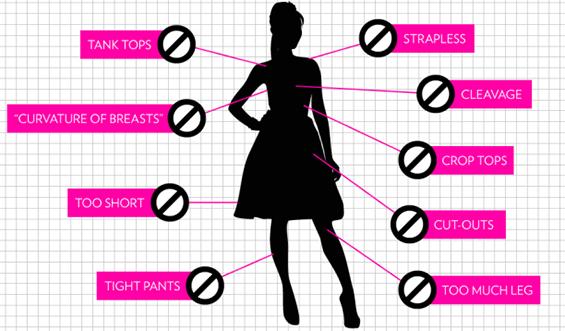Is the Dress Code Biased?
More from this author...
More stories from Michelle Lampariello

No students are ever particularly fond of abiding by the dress code’s rules and regulations, but some find it easier than others. Especially in the early fall and late spring, female students are often told to change for wearing shorts that are deemed too short, or shirts that do not cover enough of their bodies. While the occasional male student is told to change for wearing a sleeveless shirt or clothing with an inappropriate reference, female students are more frequently found to be caught violating the dress code.
Getting “dress-coded” is a larger concern for girls not because they try to break more rules, but because there are more rules in the dress code that are geared towards them. The first portion of the WHHS dress code states that students are not permitted to wear “clothing which reveals his or her back, midriff, upper thigh or cleavage.” While male students could certainly wear clothing that meets this criteria if they choose to, the rules mentioned above are primarily targeted at female students.
Female students are beginning to voice their opposition to the dress code, as many are beginning to recognize its bias. “I think [the dress code] is biased towards women because all of the rules pertain to how women dress, not really how men dress. The rules are only about covering women up,” said WHHS senior Rachel Alvarez. Bias in the dress code has been an an issue for longer than today’s high school students have been alive, but hopefully recent discussion about making changes will help to make it fair for all students.
